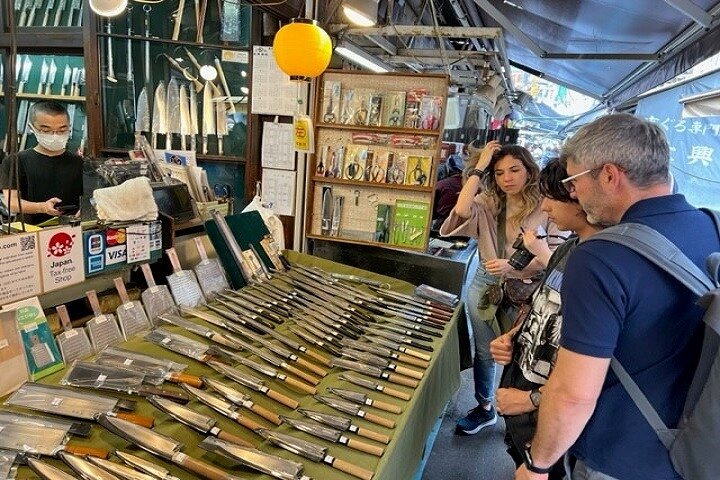Exploring the Art of Japanese Knives: A Family Adventure in Chuo City
Intrigued by the art of Japanese knife-making, I embarked on a family adventure in Chuo City, exploring the vibrant Tsukiji Market and Kappabashi Street. Guided by the knowledgeable Miya, we delved into the world of culinary tools and cultural treasures, making unforgettable memories along the way.
A Culinary Adventure Begins
As a museum curator with a penchant for interactive exhibits, I have always been fascinated by the stories behind everyday objects. So, when I heard about the Kappabashi Knife Shopping Tour in Chuo City, I knew it was an experience I couldn’t pass up. My wife and I, along with our two children, embarked on this unique journey, eager to explore the world of Japanese culinary tools and the vibrant culture surrounding them.
Our guide, Miya, met us at our hotel, and from the very beginning, her enthusiasm was infectious. She had reached out to us before our trip to tailor the tour to our interests, ensuring that we would get the most out of our day. As we navigated the Tokyo subway, Miya shared insights into the city’s history and culture, making the journey as enriching as the destination itself.
Discovering Tsukiji Market
Our first stop was the Tsukiji Outer Market, a bustling hub of activity where the air was filled with the tantalizing aroma of fresh seafood and the chatter of vendors. The market, with its 400 shops, was a sensory overload in the best possible way. Miya guided us through the maze of stalls, introducing us to the art of Japanese knife-making.
We visited two knife shops, each offering a unique selection of high-quality blades. The sales clerks were incredibly knowledgeable, explaining the different types of knives and their uses in Japanese cooking. I was particularly fascinated by the precision and craftsmanship that went into each blade. It was a delight to see my children equally captivated, asking questions and learning about the cultural significance of these tools.
One of the highlights was having a knife engraved with a friend’s name, a perfect souvenir that carried a piece of Japan’s rich culinary heritage. Miya’s expertise and fluency in English made the experience seamless, as she translated our questions and ensured we understood every detail.
Exploring Kappabashi Street
Next, we ventured to Kappabashi Street, a paradise for anyone interested in kitchenware. The street was lined with shops selling everything from tableware to the famous miniature plastic food models that adorn restaurant displays across Japan. While I didn’t purchase any of the plastic foods, capturing them in photographs was a fun way to remember the quirky side of Japanese culture.
Miya had arranged for us to have lunch at a traditional Japanese restaurant, where we were treated to an array of dishes that were as delicious as they were beautifully presented. The chef’s skillful preparation and entertaining presentation added an extra layer of enjoyment to our meal.
As we strolled through the streets, Miya shared stories about the history of the area and its significance in Tokyo’s culinary scene. Her knowledge and passion for the subject were evident, and it was clear that she took great pride in showcasing her country’s culture to visitors.
A Memorable Experience
The Kappabashi Knife Shopping Tour was more than just a shopping trip; it was an immersive cultural experience that left us with a deeper appreciation for Japanese craftsmanship and cuisine. Miya’s personalized approach and attention to detail made the tour feel intimate and special, allowing us to connect with the local culture in a meaningful way.
For families like ours, who enjoy blending education with entertainment, this tour was a perfect fit. It offered a unique opportunity to learn about Japanese culinary traditions while engaging in hands-on activities that were both fun and informative. I highly recommend this tour to anyone visiting Tokyo, especially those with a curiosity for the stories behind the tools that shape our culinary experiences.





















































